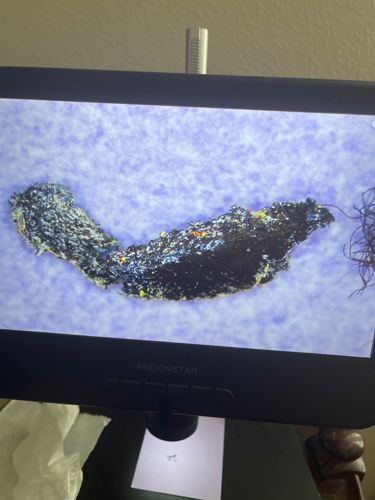Bagworm Moth Larva (Casemaking Bagworm)
Scientific Name: Thyridopteryx ephemeraeformis (likely, based on appearance)
Order & Family: Lepidoptera (Moths and Butterflies), Psychidae (Bagworm Moths)
Size: Larval case can range from 1/4 inch to 2.5 inches (6 mm to 6.5 cm) in length, depending on species and developmental stage. The larva inside is smaller.

Natural Habitat
Found on a variety of trees and shrubs, constructing their silk and debris cases on foliage, branches, and sometimes structures. Common in gardens, orchards, and forested areas.
Diet & Feeding
Herbivorous. Larvae feed on the foliage of a wide range of coniferous and deciduous trees and shrubs, including arborvitae, juniper, pine, spruce, maple, sycamore, and oak.
Behavior Patterns
The larva lives its entire life inside a protective case constructed from silk and bits of leaves, twigs, bark, or other debris from its host plant. It carries this case as it feeds and grows, enlarging it as needed. Only the head and thorax protrude from the case for feeding and locomotion. Pupation occurs inside the case. Adult males are winged and free-flying, while adult females are wingless, legless, and remain inside their larval case, emitting pheromones to attract males. Eggs are laid inside the female's case.
Risks & Benefits
Risks: Can be significant defoliators, especially when present in large numbers, leading to aesthetic damage, stunted growth, and even death of host plants, particularly evergreens. Benefits: No known direct benefits to humans, and they are generally considered pests in ornamental horticulture and forestry. They can be a food source for some parasitic wasps and flies which act as natural controls.
Identified on: 9/12/2025